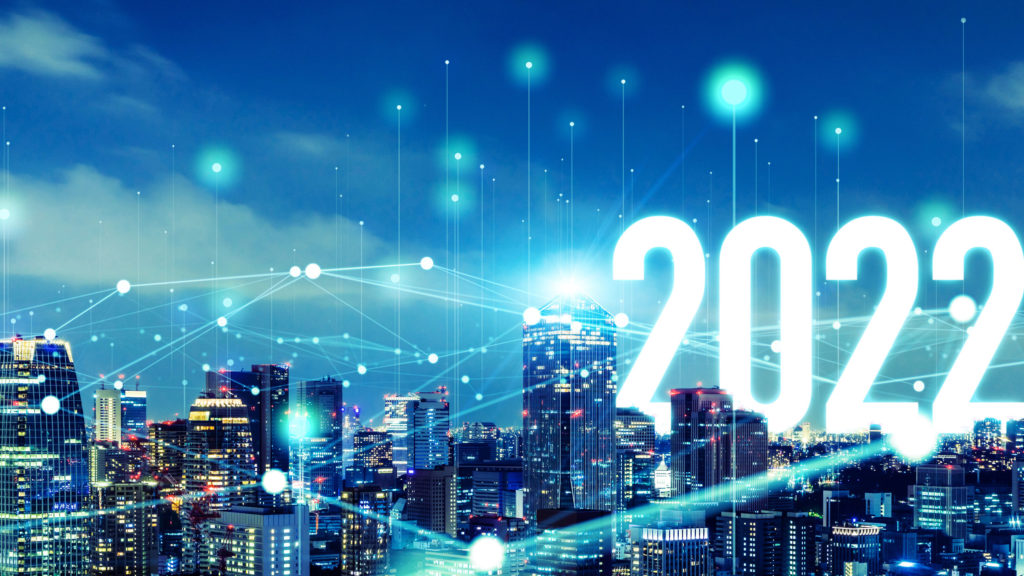COVID-19 has dramatically accelerated digital transformation in many critical sectors, including logistics & supply chain and healthcare. As a result of these changes, security took centre stage in 2021, a priority that will remain in 2022 along with sustainability and the acceleration of digitalisation to meet new challenges. By providing innovative, environmentally-friendly and cost-effective solutions, the IoT will be a leading contributor to successful digital transformation.
Industry sectors will continue to grow in size and importance
The pandemic and the climate crisis have particularly shaken industry sectors and highlighted the urgent need to move forward with the digitalisation of processes. Sectors like supply chain & logistics have been particularly impacted. They have witnessed first-hand how IoT could or did help simplify processes and reduce the need for maintenance. Altogether, it can be used to generate better return on investment.
The upside of those global crises is that industries now understand the need for simplified devices and usage. This will provide a way to increase adoption across their sector and activities and, in time, their ROI. The next step in this process will be the use of even simpler devices like tracers, instead of trackers. This will help with a complete mapping of millions of devices at low consumption and low cost. This will enable industry leaders to further increase their ROI while starting to gain in efficiency.
Improving smart cities with IoT
The implementation of IoT to create or improve smart cities has been slow as market conditions are unique for each city. With the rollout of smart cities, energy consumption and living conditions can be drastically improved. However, some cities don’t know where to start.
Many use cases exist for smart cities, from improving air quality to monitoring and maintaining installations remotely, but one use-case that will keep growing in the coming years is metering. While meters were rolled out many years ago, they will be renewed, improved and simplified to bring more benefits.
IoT will continue to accumulate data and statistics via simple devices, which will provide the metadata for in-depth understanding of buildings or installations, and are essential for sustainability and quality of life improvements.
IoT as a facilitator for sustainability
Sustainability will obviously continue to be an important trend in technology, and IoT can facilitate many use cases to reduce our impact on the environment.
From controlling renewable energy such as solar panels to measuring and managing sustainable energy sources, even if they are scattered across different locations, there are several simple applications of IoT that can and will help introduce IoT on a massive scale.
Additionally, the number of IoT connections, set to increase globally from 17.7bn in 2020 to 27bn in 2025 [1], will lead to a greater number of sensors, trackers and other monitoring tools that have been designed, amongst other things, to be energy efficient. In this way, IoT can and should play a leading role in moving towards a more sustainable world.
Security needs to be addressed and mastered
With the increasing number of connections, experts believe that by 2022, IoT network hacking will become a common phenomenon [2]. Security has been an important factor in the IoT landscape since the very first devices appeared on the market. The growth in adoption of IoT devices has multiplied the number of entry points for potential attackers. No longer are only mobiles or PCs vulnerable, but innocent’ light bulbs, cookers, video cameras and more, are attack vectors.
Today, most security threats are relatively well known. However, in the future we are bound to see threats that we couldn’t even imagine today. Security mechanisms and techniques previously used by manufacturers will be of limited use if there is an obvious backdoor into the device. The priority for the coming years is to make sure users more aware. They need to fully understand what a device is doing and explore how to limit the possibility of entry. We can then close the door to any incoming security breach.
The benefits VR and AR in IoT
Virtual and augmented reality with IoT can reunite the physical and the digital worlds. In the Industrial IoT environment, users can extract very simple data from a landscape of machines, systems and processes. They can also use multiple low data rate devices, as well as data manipulation and statistics to build virtual landscapes.
This is where you will generate revenue. ROI from basic data exists – but s limited compared to what metadata can build. IoT network providers are already gathering metadata to build a kind of virtual, augmented reality.
With this kind of metadata, technology giants like Amazon could create a form of VR to help reduce costs. This could create new opportunities to simplify and accelerate adoption of certain technologies or better understand and exploit our surroundings. With many more devices than phones and classic connectivity devices in the future, there will be an opportunity to collect more statistics and do just that.
Change is coming
Change is coming and we’re seeing an increasing adoption of IoT based solutions. This will help many sectors come out of the COVID-19 crisis and open the way to a more sustainable and profitable future.
– Originally written by Christophe Fourtet, CSO & Co-Founder of Sigfox –
